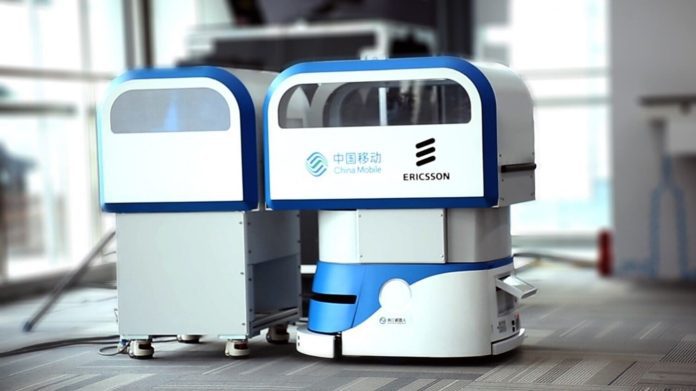Automated guided vehicles are just one part of 5G manufacturing
An automated guided vehicle (AGV) is a portable robot that follows along marked long lines or wires on the floor, or uses radio waves, vision cameras, magnets, or lasers for navigation. AGVs are most often used in industrial applications to transport heavy materials around large industrial facilities, such as a factory or warehouse.
Many industrial companies operate and maintain a fleet of automated guided vehicles, but in order to derive the real value from them, companies will need to digitize the manufacturing environment and connect the vehicles, then capture and meld all that information. When AGV information is integrated with all the company’s systems, these firms will be able to capture the necessary data, produce insights, reduce uncertainty, and support decisions.
Automated guided vehicles face reliable connectivity challenge
According to Japanese tech firm Hitachi, a challenge with handling multiple AGVs in manufacturing or industrial operation is the connectivity. “Traditionally most companies use Wi-Fi to connect to the units, but inside a large manufacturing plant with heavy equipment, magnetic fields and other interferences, making sure you are connected and bringing your AGV data in real-time, all of the time is also a challenge. The optimization gained by investing in these machines can quickly be eroded if there are Wi-Fi shadows around your facilities and you lose the connectivity with your unit, right when a problem is about to happen,” Steven Garbrecht, a former Director of Solutions Marketing- IoT and Manufacturing Digital Solutions at Hitachi Vantara, said.
Here is where 5G technology can play a key role to set the conditions where AGVs can show their full capabilities. Hitachi is partnering with telecommunication carriers and technology providers like Verizon and Ericsson, that can fully enable private 5G environments to replace Wi-Fi at the edge, significantly increasing the density of connected devices, sensors and machines, improving the latency and throughput of data streams and assuring complete coverage in the industrial facilities, to enable a better operation of AGVs.
German company OSRAM noted that automated guided vehicles require intelligence and responsiveness to avoid collisions with people at industrial facilities. “This was not possible with the existing ICT infrastructures. Only a mobile network with guaranteed performance can ensure the efficient operation of AGVs and, at the same time, serve as a basis for the transformation into a smart factory,” the German firm said in a report.
How is OSRAM using automated guided vehicles?
The OSRAM factory in Schwabmünchen opted for an integrated platform: a 4G/5G campus mobile network in conjunction with a combination of local edge cloud and operator edge cloud, in order to comply with the required minimum latencies for problem-free implementation of the AGVs. “The network guarantees communication between the AGVs and the local computing resources. The processing of mapping and navigation data on the computing resources near the AGVs also ensures low latency in terms of the IT. On this basis, further real-time applications can also be established in addition to the operation of the AGVs,” OSRAM said.
Meanwhile, Swedish vendor Ericsson highlighted that AGVs have been cruising industrial floors for decades but were originally designed to operate over Wi-Fi, where it said that “Limitations existed from the start. If an AGV detected a potential collision, it stopped and had to be manually cleared by a person to resume operations.”
“As the spaces AGVs needed to cover grew, another flaw in their connectivity design emerged: a seamless handover from one Wi-Fi cell to another was not possible, and when data transmissions become limited, accidents might occur. Over the years, thanks to advancements in cellular and 5G connectivity, AGVs have moved closer to becoming truly autonomous robots, no longer reliant on preconfigured scripts,” Patrick Ruelke, Business Development Manager at Ericsson, said.
With 5G, AMRs can utilize navigation algorithms, LiDAR sensors, vision technology and virtual map sharing to detect objects, think on their own and move autonomously through facilities. Wi-Fi cannot support these advanced machines with the seamless coverage and high data transfers needed to operate in sprawling environments, Ruelke added. “Cellular, namely 5G, is the only technology that can provide the reliability, bandwidth, coverage and security required to safely operate AGVs.”
For more 5G manufacturing content, check out the following:

